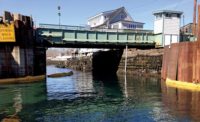The I-495 Capital Beltway Express Lanes project delivered the most extensive improvement to the northern Virginia portion of the Washington, D.C., beltway in a generation.
The Fluor-Lane joint venture built two new high-occupancy toll lanes in each direction on a 14-mile stretch of I-495, from the Springfield Interchange to north of the Dulles Toll Road. The project replaced more than $260 million in aging infrastructure, including 58 bridges and overpasses. The five-year job was funded by a $1.9-billion public-private partnership.
Crews worked near one of the highest-volume interstates in the nation, dealing with high-speed traffic while executing lane closures, traffic switches, deck pours and overhead demolition.
The total project expended approximately nine million work hours. The overall safety performance for the project had a total recordable incident rate of 0.69, which ranks the project among the safest heavy-civil projects in the nation. The project tallied a lost-time accident rate of 0.04.
Fluor-Lane executed an "outside-in" approach to the project. Crews first placed, to the outside of the beltway, barriers on the right shoulder to create work areas. Once the right shoulder was closed, work could progress to build the outer lanes first.
This strategy also accommodated faster drainage, utility and sound-wall installation. Equipment and materials were staged along the corridor and within exit loop ramps to provide easy access and better efficiency.
After all outside work was completed, crews shifted their focus to "unzipping the beltway," or working in the middle, where the new express lanes would be located.
During both the outside- and inside-lane construction, crews removed and replaced arterial roadway bridges. The original design concept called for three-stage replacement of bridges over the beltway. To save time, Fluor-Lane planned and executed two-stage replacements on all but one bridge.
Daytime lane closures couldn't start until after 9:30 a.m. during the work week, and all lanes had to be reopened by 3:30 p.m. Overnight closures were similarly restricted, with exceptions for steel erection, when short-duration total closures were permitted.
The project implemented a first-of-its-kind tolling-system technology that includes a dynamic pricing algorithm. It adjusts toll rates based on speed in the express toll lanes and the highway's available capacity at that time of day. The toll-road operator, Transurban, will oversee operations of the lanes for the next 75 years.
I-495 Capital Beltway Express Lanes, Northern Virginia
Key Players
Owner Virginia Dept. of Transportation
Consortium Fluor-Transurban
Design-Build Contractor Fluor-Lane (a joint venture of Fluor and The Lane Construction Corp.)
Design Firm HNTB
Subcontractors ETC Maintenance, Roadway Maintenance





